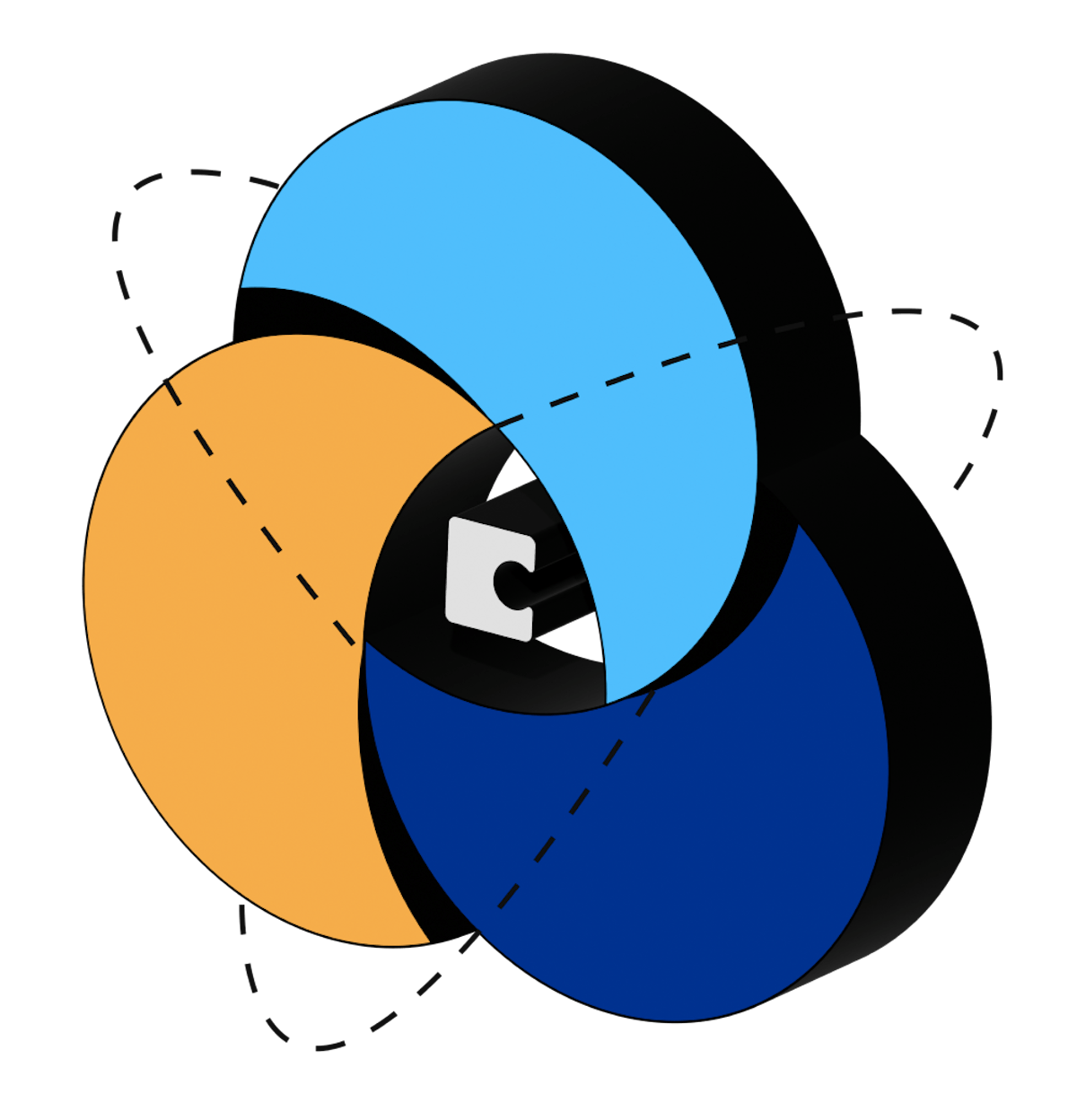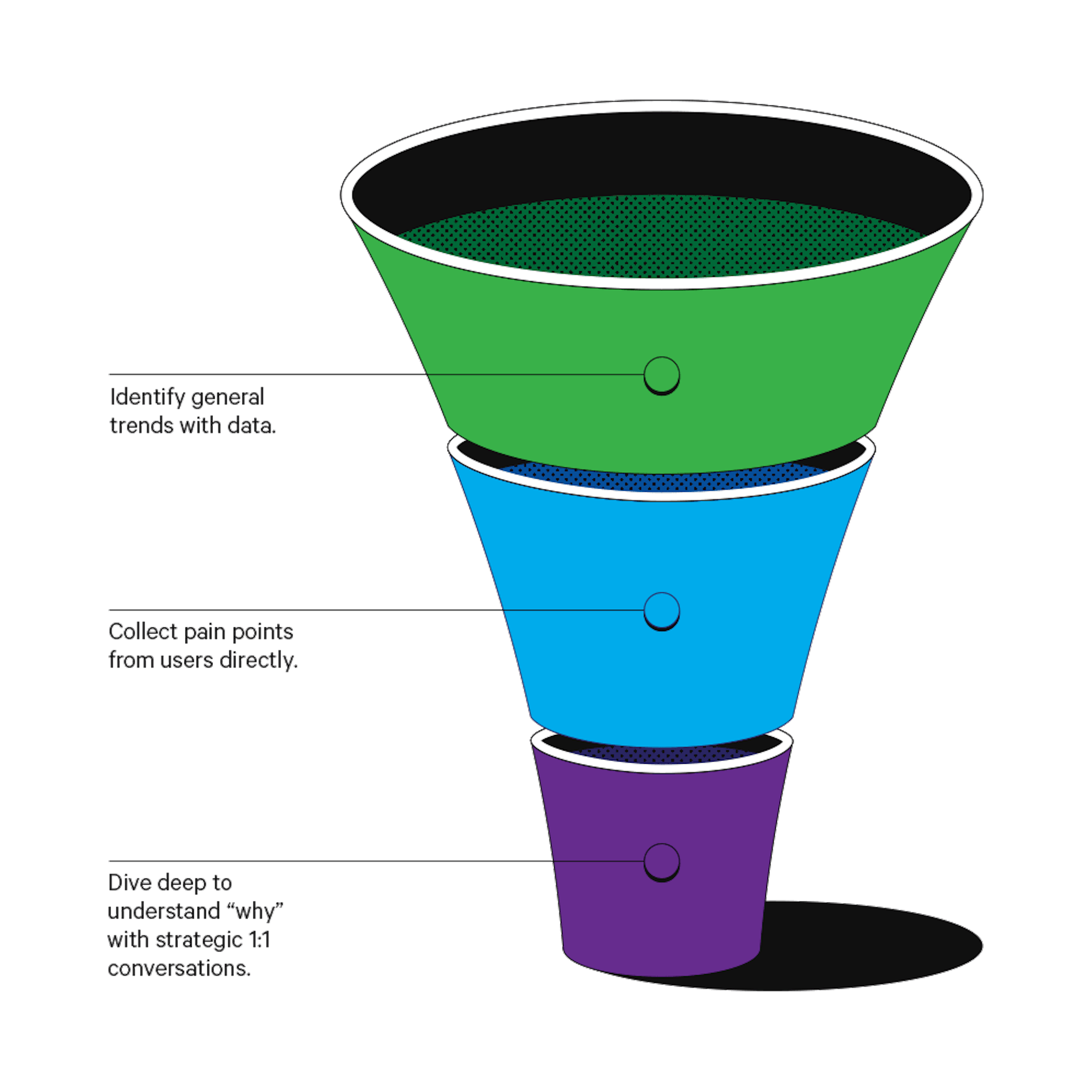How to discover hidden user problems
A research funnel helps me continuously identify pain points.


Matt Woods
Product Manager at Coda
Blog > Product teams · 7 min read

I’m a big believer that the closer you are to your customers, the more likely you are to make product decisions that actually help them.
My research funnel

A research funnel helps me continuously identify pain points.
Step 1
Identify your users.
Step 2
Set up a funnel.
1. Create a survey.
I start by creating a simple user feedback survey using a tool called Typeform. When I say simple, I mean 2 to 4 questions at most. At Coda, I use questions such as “Have you made a doc that solves a meaningful problem?” and, “What were the most difficult or frustrating moments that held you back while making the doc, if any?” The survey should take less than 60 seconds for a user to fill out and, at the end, there’s an optional invitation to book a call with me to discuss their feedback further.2. Set up call booking.
I use a tool called Calendly so users can automatically add 10-minute calls to my calendar during pre-set days and times. This also makes it easy to “turn up” or “turn down” the volume of calls. On a busy week, I’ll decrease my availability and on a light week, I can open up new time blocks. In addition to adding the Calendly invite link to the survey, I put it in my email signature, too.3. Circulate the link.
I share the survey link with Coda’s support team, salespeople, and others who talk to users directly day-to-day. I’ve also asked our growth marketer to include the link in existing Net Promoter Surveys or lifecycle emails, so I’m not chasing down users myself.An existing Coda email

I added a link to Calendly in our existing emails so that users could schedule time with me.
Step 3
Prep for calls.
Step 4
Ask strategic questions.
1. Push questions.
What is pushing you to try this solution right now?2. Pull questions.
What is pulling you in the other direction or adding friction?3. Habit questions.
What is suboptimal about the way you’re currently doing things?4. Anxiety questions.
What could break if you try this solution and don’t like it? At the beginning of the interview, I typically try to ask an open-ended question that encourages the participant to hit on both push and pull themes in their answer.For example, I’ll prompt with: “Tell me the story of how you got started in Coda like we're playing back a movie scene-by-scene. Start with how you decided to start using Coda and what you hoped to accomplish. And tell me about each step along the way during your first few days, especially any moments that held you back or felt frustrating.”
It’s a hefty opening. But it provides the participant a clear starting point and direction to start sharing. As they tell their story, they'll often say things that can be mapped into each of the four themes above. Then I can decide which themes to spend more time unpacking with them.

This is the most important part of the process! Listen carefully to your user and let them guide you to the most important feedback.
I keep detailed notes from each call

I organize my notes from each call in Coda so that my teammates also have access.
I share my notes with the team in Slack

Related posts
Explore more stories for product teams












